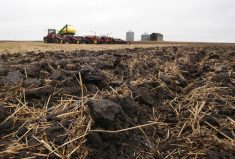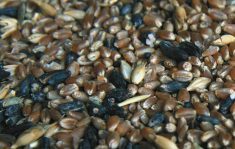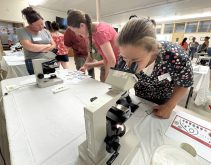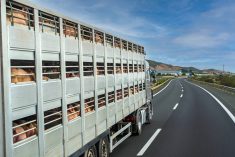Glacier FarmMedia – In today’s sustainability-focused world, farmers and the animal nutrition industry must think as much about what comes out of an animal as what goes in.
That was one message at the annual Animal Nutrition Conference of Canada held in Winnipeg in May.
Why it matters: Producers of all types of livestock face demands to restrict greenhouse gas and nutrient emissions.
Read Also

The joys of fishing from shore
Manitoba has many lake and river shorelines to drop a fishing line without the cost of a boat, making shore fishing more accessible, and anglers can still catch impressive fish.
Feed formulators need to ensure that animals extract all they can from macro and micronutrients to reduce the amount of harmful substances that end up in air, water and soil, attendees heard.
“They look at livestock and see pollution,” said Melissa Dumont, executive director of the Animal Nutrition Association of Canada, speaking of public and government attitudes toward agriculture.
Those attitudes result in scrutiny of and demands upon the feed industry that are relentless and sometimes wrongheaded, several conference presenters said.
“The pressure on us … is absolutely immense,” said British feed scientist Emily Burton of Nottingham Trent University. “It’s the assumptions that annoy me most as a nutritionist.”
Livestock and feed industries have tried to convey public outreach messages on ever-increasing efficiency and per-kilogram declines in greenhouse gas emissions and environmental impact.

In the U.S., the hog industry claims it now has an eight per cent smaller environmental impact, uses 75 per cent less land, consumes 25 per cent less water and runs on seven per cent less energy than 50 years ago, despite producing much more meat.
Each healthy pig or steer today now produces more pounds of gain with fewer emissions than ever before, while preserving grasslands and consuming materials that would otherwise be waste, the industry repeatedly argues. Virtually all feed companies and researchers now include “sustainability” as a key metric when considering advances and characteristics they build into feed sources and practices.
However, there is a widespread belief among the public that livestock production is a primary cause of climate change, water pollution and soil degradation. That has translated to resentment, and some farmers and industry representatives reject what they consider to be misperceptions of net livestock emissions and the sustainability of their sectors.
The agenda
Getting to net-zero livestock production and turning pledges into concrete sustainability results for pig and dairy cattle producers were the lead-off sessions at the symposium, which drew more than 400 attendees. A full morning was also dedicated to researchers focused on boosting livestock sustainability with better feeding.
The notion that there are still radical gains to be made in livestock feeding efficiency ran through the conference.
American and Dutch experts challenged the feed industry to take micronutrient impact, efficiency and waste more seriously.
University of Saskatchewan swine nutrition scientist Dan Columbus also highlighted the relative lack of study on sow nutritional needs. Sow rations are crudely constructed and mostly ignore the animals’ cyclical requirements.
The next generation
Dozens of Canadian graduate students also attended the conference. Student researcher presentations were popular with more seasoned researchers, and the conference sprinkled student participation through the event.
University of Saskatchewan graduate student and researcher Roseline Ogory presented her work on incorporating Ahliflower seed and cake in chicken diets to produce better omega-3 content in eggs.
Making its debut at the conference was the African Youth in Canadian Agriculture, a new national organization attempting to connect African students in Canadian high schools and universities to opportunities in agriculture.




















